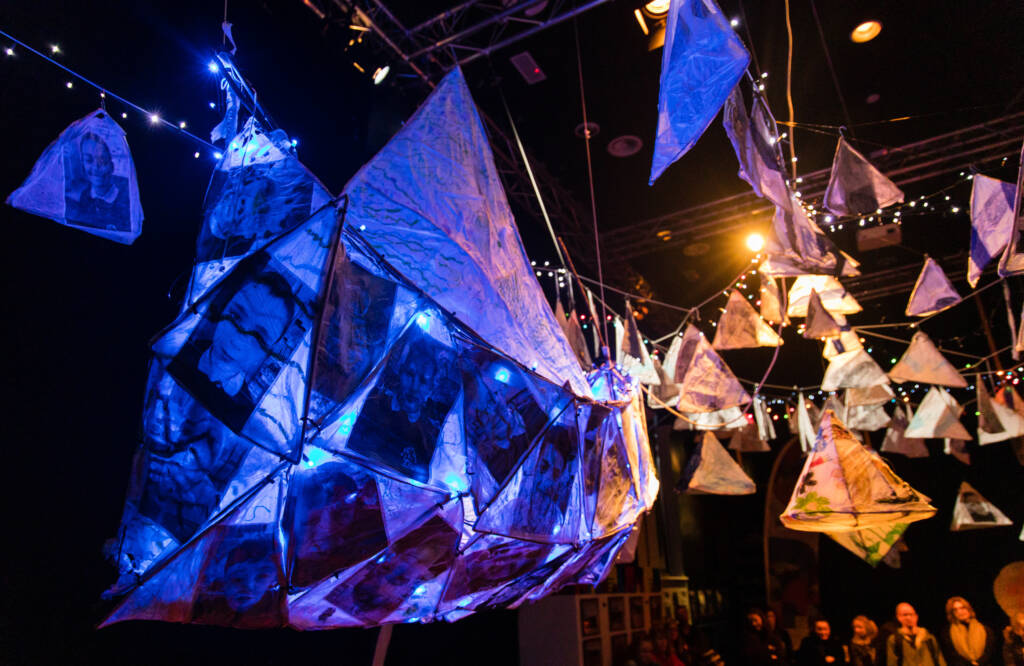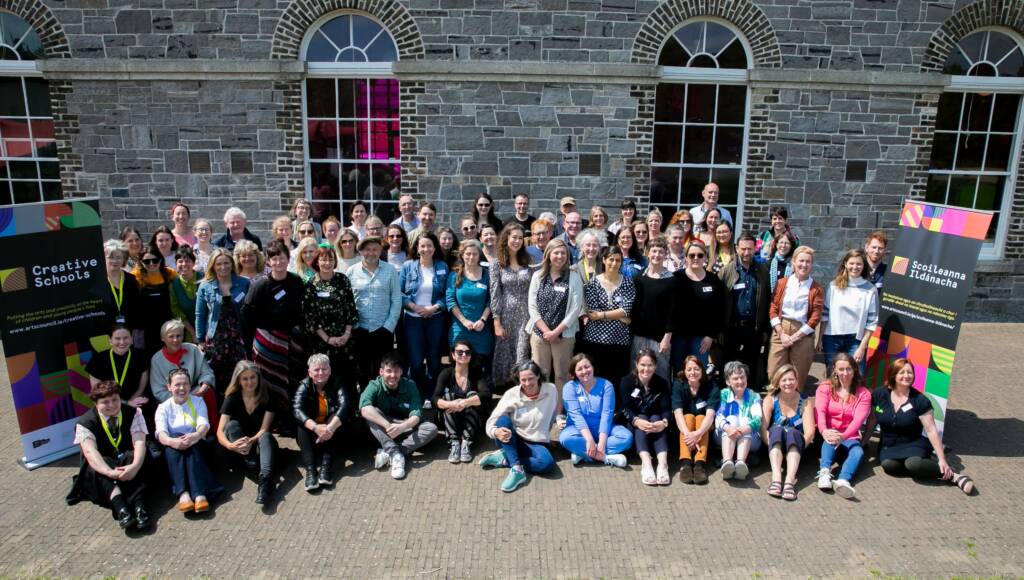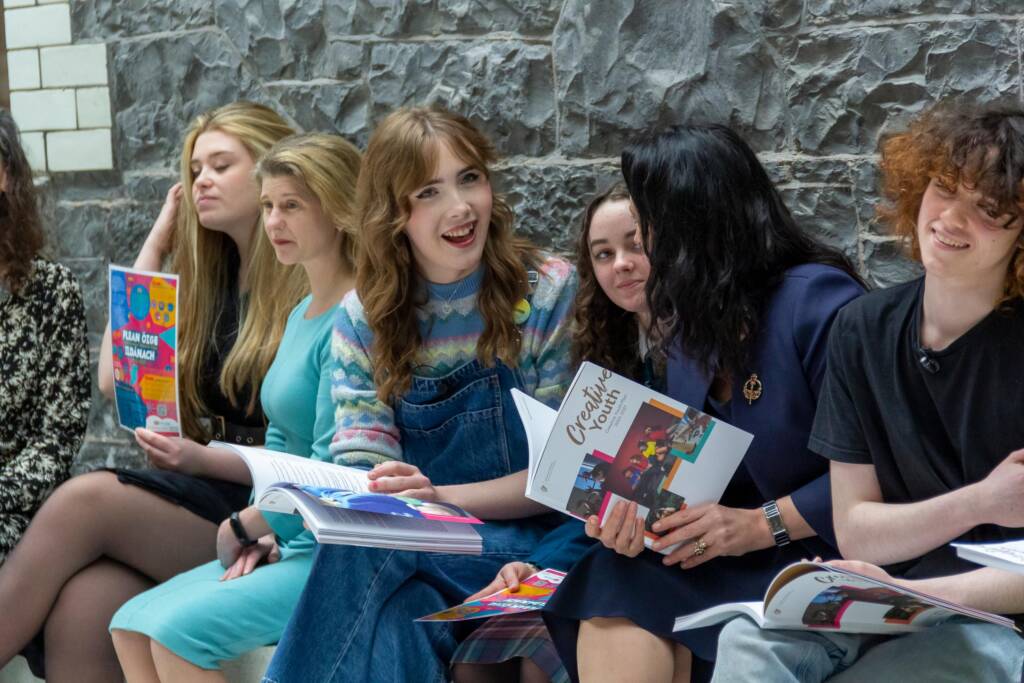The Creative Schools journey
Creative Schools was piloted in a selection of Irish primary and post-primary schools in 2018 as a child-centred way to provide and support opportunities for artistic expression.
Schools take part in a two-year guided journey to develop and implement a Creative Schools Plan unique to their own school. Each participating school or setting is matched with a trained Creative Associate who guides and supports staff, students, learners and parents. A Creative Associate helps find ways for children and young people to be at the heart of creative activity in their school. Creative Associates are artists, creative practitioners, teachers and educators with an understanding of the arts and creativity and its potential to transform the lives of children and young people.

Working with a creative associate
The Creative Associate consults with young people about the school environment, their experience of arts education and the way in which they learn. From this, they create a sustainable Creative Schools Plan that draws on a wide range of opportunities within the school/centre and the wider community. In each school, children and young people talk about what creativity means to them, are listened to, and their ideas are acted upon.
Activities undertaken are as interesting, varied and unique as the children themselves, including circus, architecture, heritage, music, comedy, literature, coding, traditional arts, science, horticulture, film, design, craft, drama, visual arts and dance.

The impact of the Creative Schools programme
Since the pilot in 2018, schools in every county in Ireland have taken part. All school types have been represented. The programme successfully prioritises participation by DEIS Schools, small rural schools, special schools, Irish Language medium schools and Youthreach centres.
In the Creative Schools Evaluation Report by Dr. Regina Murphy and Dr. Eemer Eivers (Dublin City University, 2022), participants (including children, students, teachers, principals, Creative Schools Coordinators and supporting arts practitioners and artists) were overwhelmingly positive in their attitudes towards the programme and their own experience. 99% of participating schools said they would recommend the programme to other schools.

